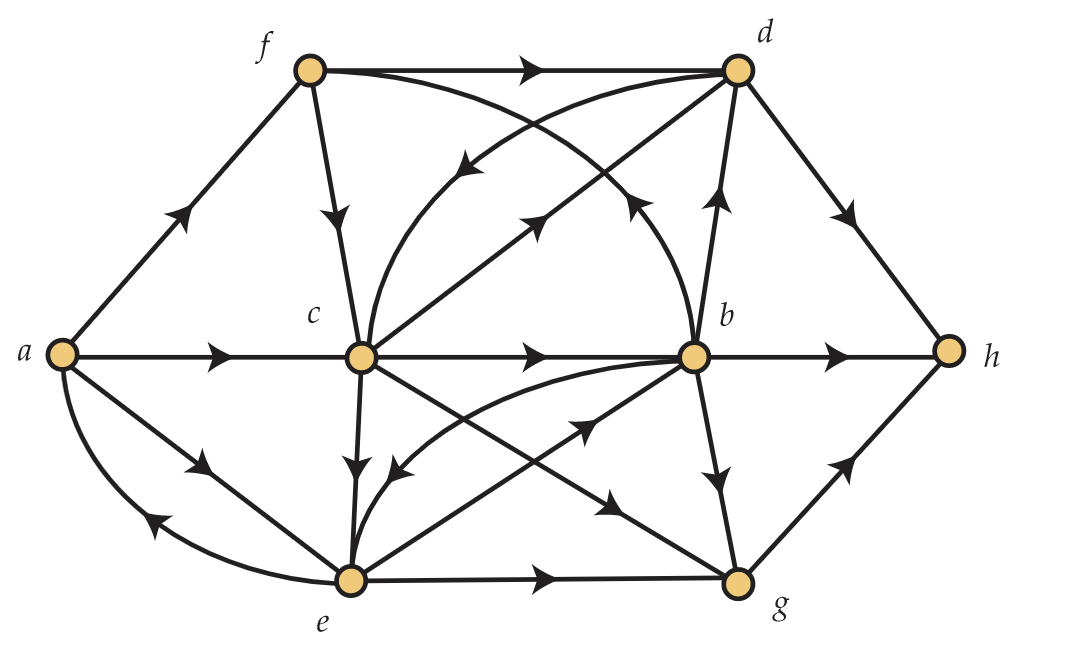12.2: Digraphs
( \newcommand{\kernel}{\mathrm{null}\,}\)
In this section, we introduce another useful variant of a graph. In a graph, the existence of an edge xy can be used to model a connection between x and y that goes in both ways. However, sometimes such a model is insufficient. For instance, perhaps it is possible to fly from Atlanta directly to Fargo but not possible to fly from Fargo directly to Atlanta. In a graph representing the airline network, an edge between Atlanta and Fargo would lose the information that the flights only operate in one direction. To deal with this problem, we introduce a new discrete structure. A digraph G is a pair (V,E) where V is a vertex set and E⊂V×V with x≠y for every (x,y)∈E. We consider the pair (x,y) as a directed edge from x to y. Note that for distinct vertices x and y from V, the ordered pairs (x,y) and (y,x) are distinct, so the digraph may have one, both or neither of the directed edges (x,y) and (y,x). This is in contrast to graphs, where edges are sets, so {x,y} and {y,x} are the same.
Diagrams of digraphs use arrowheads on the edges to indicate direction. This is illustrated in Figure 12.12. For example, the digraph illustrated there contains the edge (a,f) but not the edge (f,a). It does contain both edges (c,d) and (d,c), however.

When G is a digraph, a sequence P=(r=u0,u1,…,ut=x) of distinct vertices is called a directed path from r to x when (uiui+1) is a directed edge in G for every i=0,1,…,t−1. A directed path C=(r=u0,u1,…,ut=x) is called a directed cycle when (ut,u0) is a directed edge of G.


